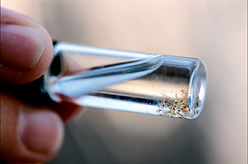Leishmaniasis
What is Leishmaniasis?
Leishmaniasis is an important human and veterinary disease caused by Leishmania parasites that affect 12 million people in over 98 endemic countries. Leishmaniasis is a parasitic disease that is found in parts of the tropics, subtropics, and southern Europe. It is classified as a Neglected Tropical Disease (NTD). The disease is now emerging in Europe due to climate change and massive population displacement. The parasite is known to rapidly adapt to novel environments with important consequences for disease outcome. It has therefore been recognized as an emerging public health threat for the EU.
Leishmaniasis is caused by infection with Leishmania parasites, which are spread by the bite of phlebotomine sand flies. There are several different forms of leishmaniasis in people. The most common forms are:
-
cutaneous leishmaniasis, which causes skin sores,
-
mucosal leishmaniasis, which affect the nasal, oral and pharyngeal mucosa
-
and visceral leishmaniasis, which affects several internal organs (usually spleen, liver, and bone marrow).
Leishmaniasis is among the five most important parasitic diseases worldwide, with an estimated 350 million people at risk of infection. The disease causes a spectrum of clinical manifestations ranging from disfiguring cutaneous to fatal visceral forms, which results from infection by different species of Leishmania parasites. These unicellular parasites adapt to a remarkable range of hosts. They grow as extracellular parasites inside phlebotomine sand flies that transmit Leishmania to variety of vertebrates, such as rodents, dogs, and humans, where they grow inside immune cells, notably macrophages, causing severe pathologies that may lead to death.
Leishmaniasis is one of the most neglected diseases and as a consequence attracts limited attention. There is no human vaccine and only few treatments are available,.






How do people get infected with Leishmania parasites?
The main way is through the bite of infected female phlebotomine sand flies. Sand flies become infected by sucking blood from an infected animal or person. People might not realize that sand flies are present because:
-
They do not make any noise;
-
They are small: they are only about one third the size of typical mosquitoes or even smaller;
-
Their bites might not be noticed (the bites can be painless or painful).
Sand flies usually are most active in twilight, evening, and night-time hours (from dusk to dawn). Although sand flies are less active during the hottest time of the day, they may bite if they are disturbed (for example, if a person brushes up against the trunk of a tree or other site where sand flies are resting).
Some types (species) of Leishmania parasites also may be spread via contaminated needles (needle sharing) or blood transfusions. Congenital transmission (spread from a pregnant woman to her baby) has been reported.
Lifecycle in the sand fly
The sand fly feeds on blood from an infected mammal and takes up the amastigote form of the parasite into the abdominal midgut. Here the parasite transforms to the procyclic promastigote form. The parasite is then thought to attach to the midgut wall and finally migrate back towards the mouthparts. Just before it reaches the mouthparts it converts to its mammalian-infectious form, the metacyclic promastigote, ready for when the sand fly takes its next blood meal. The parasite is passed on because the sand fly regurgitates the mixture that lingers in its mouth parts into the bite before feeding.


What are some symptoms/signs?
Visceral:
Some patients are asymptomatic and do not realize that they carry the parasite. Symptoms appear in weeks to months after the bite of the sand fly. other symptoms include:
-
weight loss, which may be severe,
-
low blood counts (pancytopenia),
-
enlargement of the liver and spleen (hepatosplenomegaly),
-
fever, which is usually intermittent,
-
high levels of immune globulin in the blood (hypergammaglobulinemia).
-
persistent rash or pigment changes in the skin
-
renal failure.
Cutaneous:
-
Skin lesion(s). The lesions may be dry or weeping and are not usually painful unless they are secondarily infected by bacteria.
Mucosal: involves the nose, mouth, and larynx.
-
Initially, symptoms similar to Cutaneous at site of bite.
-
nodules inside the nose
-
perforation of the nasal septum
-
enlargement of the nose or lips
-
voice changes
-
Ulcerated lesions
Click below to Learn More:
Impavido® (miltefosine) is an FDA-approved treatment for cutaneous, mucosal and visceral leishmaniasis in patients 12 years of age and older. PLEASE SEE FULL PRESCRIBING INFO
SITE IS MEANT FOR PHYSICIANS ONLY
